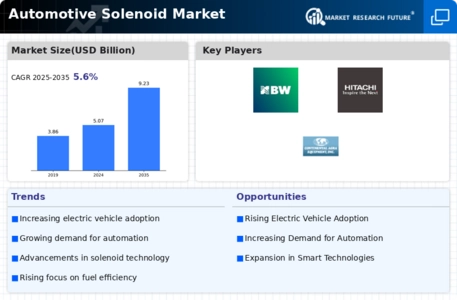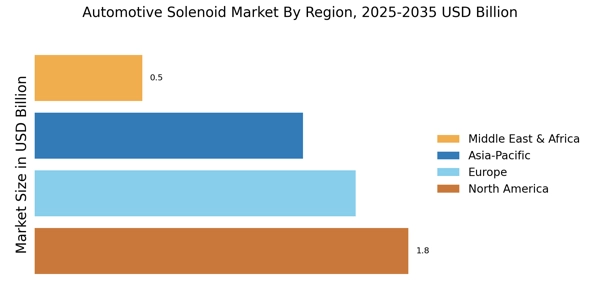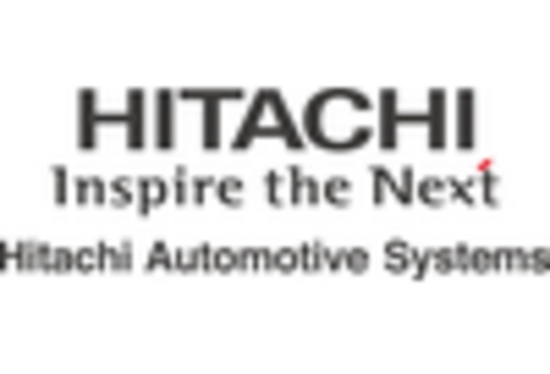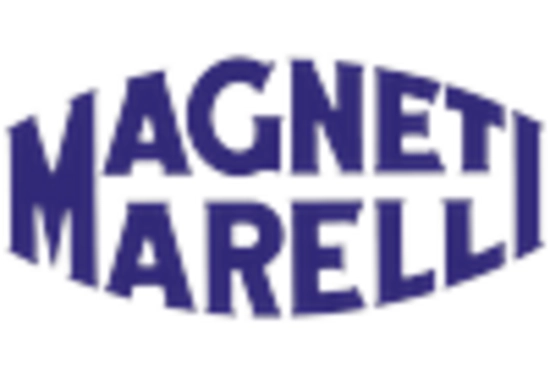Growth in Automotive Production
The automotive production landscape is experiencing a resurgence, which is likely to bolster the Automotive Solenoid Market. With an increase in vehicle manufacturing, the demand for solenoids used in various applications, such as fuel injection and transmission control, is expected to rise. In 2025, global vehicle production is projected to reach over 90 million units, creating a substantial opportunity for solenoid manufacturers. This growth suggests that companies will need to scale their production capabilities and enhance their supply chain efficiencies to meet the burgeoning demand for automotive solenoids. Additionally, this trend may encourage innovation in solenoid technology to improve performance and reduce costs.
Increasing Vehicle Electrification
The automotive industry is witnessing a pronounced shift towards electrification, which is likely to drive the Automotive Solenoid Market. As electric vehicles (EVs) gain traction, the demand for solenoids that control various functions, such as battery management and power distribution, is expected to rise. In 2025, the number of electric vehicles on the road is projected to surpass 30 million units, indicating a substantial market for solenoids tailored for electric applications. This trend suggests that manufacturers will need to innovate and adapt their solenoid designs to meet the specific requirements of electric drivetrains, thereby enhancing the overall functionality and efficiency of EVs.
Technological Innovations in Solenoid Design
Technological advancements in solenoid design are poised to reshape the Automotive Solenoid Market. Innovations such as miniaturization, improved materials, and enhanced electromagnetic properties are likely to enhance the performance and reliability of solenoids. As vehicles become more sophisticated, the need for compact and efficient solenoids that can operate in various environments is becoming increasingly apparent. The introduction of smart solenoids, which can communicate with vehicle systems, may further drive market growth. This trend suggests that manufacturers must stay abreast of technological developments to remain competitive and meet the evolving demands of the automotive industry.
Emphasis on Fuel Efficiency and Emission Control
The automotive sector is increasingly prioritizing fuel efficiency and emission control, which is likely to impact the Automotive Solenoid Market. As regulations become more stringent, manufacturers are compelled to adopt technologies that enhance fuel economy and reduce emissions. Solenoids are integral to systems that manage fuel delivery and exhaust control, making them essential for compliance with these regulations. The market for fuel-efficient vehicles is expected to grow, with a projected increase in demand for solenoids that support advanced fuel injection systems. This trend indicates that solenoid manufacturers may need to invest in research and development to create products that align with evolving environmental standards.
Rising Demand for Advanced Driver Assistance Systems (ADAS)
The proliferation of Advanced Driver Assistance Systems (ADAS) is anticipated to significantly influence the Automotive Solenoid Market. As safety regulations become more stringent, automakers are increasingly integrating ADAS features into their vehicles. Solenoids play a crucial role in actuating various components within these systems, such as braking and steering mechanisms. The market for ADAS is expected to grow at a compound annual growth rate (CAGR) of approximately 10% through 2025, which could lead to a corresponding increase in the demand for solenoids. This trend indicates that manufacturers must focus on developing solenoids that are not only reliable but also capable of operating under diverse conditions.


















Leave a Comment